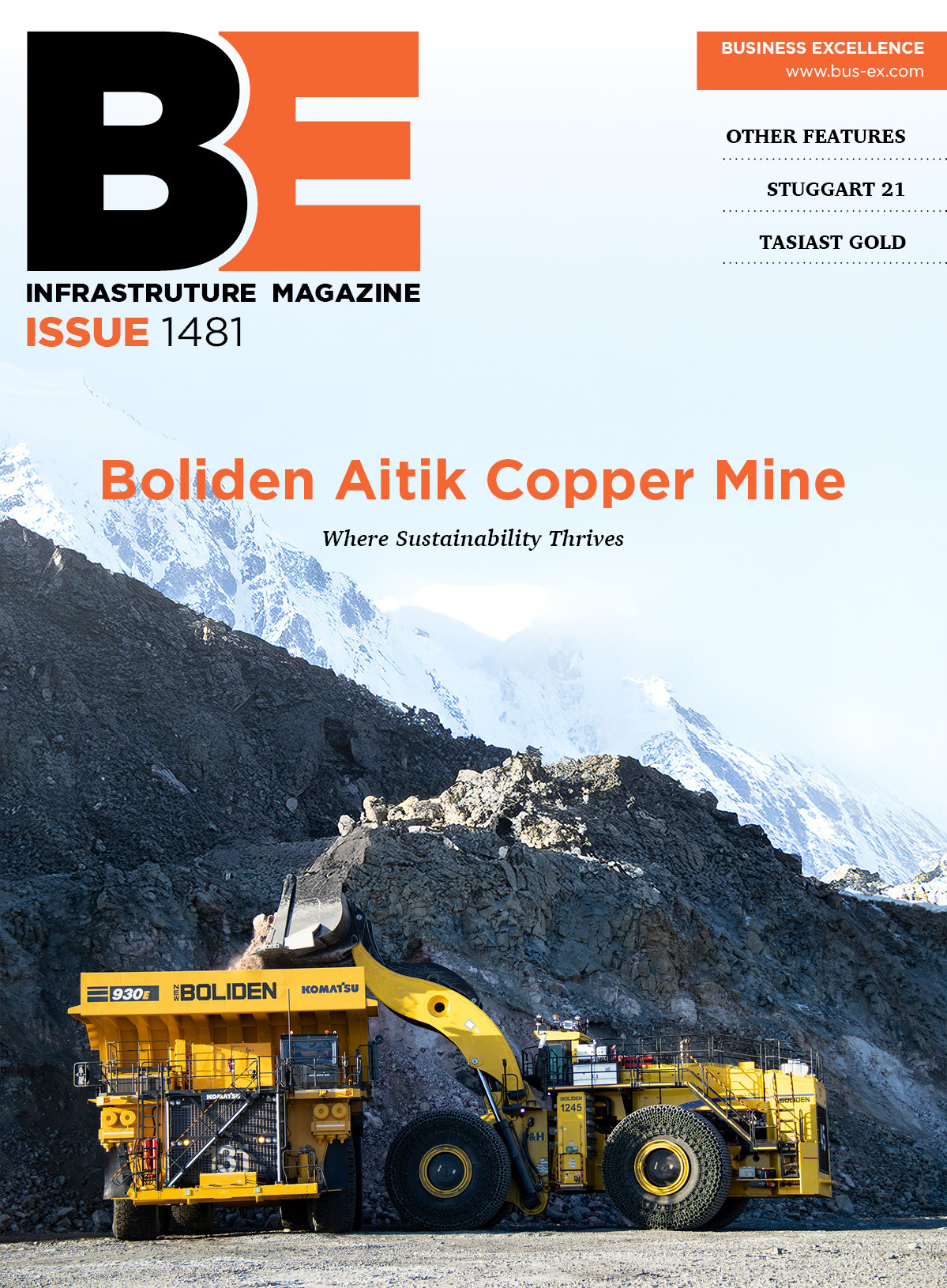Terminal velocity
A new storage terminal at the Port of Amsterdam, being built by Dutch storage facilities provider Royal Vopak, will greatly increase capacity and service to the surrounding region. Project director Hans Dilweg tells Ruari McCallion about the companyÔÇÖs state-of-the art facility.
For almost 400 years, the companies that now form Royal Vopak have been providing storage and warehousing in the Netherlands. It started in 1616, when groups of weighing-house porters allied to offer services such as weighing, sorting and storage for tea, spices and other commodities brought to the country by the Dutch East India Company. They required special storage conditions and care, as do oil and gas, though in a different way.
The first barrels of oil arrived in 1862 and the company built the first dedicated oil storage facility in Europe, in the port of Rotterdam. By this time conditioned storage and international logistics were part of the various companiesÔÇÖ stock-in-trade. It was becoming the organisational DNA of the businesses that would merge together to form Royal Vopak, which came into existence in its present form in 1999, with the merger of Pakhoed and Van Ommeren.
Royal Vopak is today the worldÔÇÖs largest independent tank terminal operator, employing around 3,700 people and offering liquid bulk storage through a network of nearly 80 facilities across the world. Meeting customer needs requires constant re-evaluation of services and facilities and, in response to market requirements, the company is building a brand new storage terminal in the port of Amsterdam. It was agreed internally in May 2009, work began in October 2009 and the first phase is scheduled to be fully open in the second half of 2011.
ÔÇ£It will be a state-of-the-art facility and will be highly automated and designed with the minimum of operator interface in mind,ÔÇØ says Hans Dilweg, project director for Royal VopakÔÇÖs new Amsterdam storage terminal. ÔÇ£This is additional capacity for us; we only have a small facility in Amsterdam at the moment and weÔÇÖre building it in response to customer needs. Our major facility is in Rotterdam; this terminal will provide new storage for the import and export of gasoline and diesel fuels.ÔÇØ The fuels the facility will hold come from all over the world.
ÔÇ£Our customers determine where their products are coming from and going toÔÇöwe are simply a service provider,ÔÇØ says Dilweg. It is quite some service that the new Amsterdam terminal will provide. ÔÇ£The capacity will be 1.12 million cubic metres, which is over one billion litres. Initially, we will be supplying storage onlyÔÇöwe wonÔÇÖt have pipe or truck transfer facilities but we have space available for expansion and will be able to provide that if required.ÔÇØ The terminal will also operate and supply blending services. Not refiningÔÇöit is designed to receive, hold and transfer fuels that have already been refinedÔÇöbut the blending capability will raise the quality and reliability bar to a new level.
ÔÇ£We have specified state-of-the-art hardware and software,ÔÇØ Dilweg continues. ÔÇ£The software is supplied to us by a third partyÔÇöEmerson, which is part of HoneywellÔÇöbut we are steering its design and development. We are now in the testing phase, which is undertaken by us, jointly with the developers.ÔÇØ The software will control a facility that extends to 35 hectares (around 84 acres), 41 tanks and their associated infrastructure of pipework and pumps.
ÔÇ£The nice thing about what we do is that there can be a lot of activities but they are all within closed systems of piping systems and tanks. They can be remotely checked and there arenÔÇÖt any environmental issues,ÔÇØ says Dilweg. The facility can be operated from a single central control office by just a handful of peopleÔÇöthe employment level for the completed facility will be less than 50, providing round-the-clock operations.
As the Netherlands is densely populated, environmental concerns are high up the agenda, as is access. ÔÇ£The Port of Amsterdam is located behind locks, which constrain the size of the ships that come in,ÔÇØ he explains. ÔÇ£They can accept vessels up to 120,000 tonnes with partial loads.ÔÇØ In practice, those limitations arenÔÇÖt a major concern as American ports have similar draft limits. ÔÇ£We have paid particular attention to the risks of spillage and pollution. Everything we have here is a closed systemÔÇöwe donÔÇÖt interconnect with hoses, except vapour hoses for processing vapour from shipsÔÇÖ tanks. We have integrated environmental systems, including leakage detectionÔÇöif there is any problem we will know about it immediately and can deal with it straight away.ÔÇØ
Any spillage that might occur will be in a contained areaÔÇöthe facility has quays and jetties which are all served by fixed loading arm connections. Meeting high environmental standards is a source of pride for Royal Vopak.
ÔÇ£We went through a long and challenging permit processÔÇöon the environmental side, we have met possibly the tightest standards around,ÔÇØ says Dilweg. ÔÇ£Our tanks all have internal floating roofs. When a tank is fully emptied, the internal floating roof ÔÇÿlandsÔÇÖ on its feetÔÇöthis is approximately a metre above the tank bottom, due to equipment installed. The space between the floor and roof is where vapour gathers, which would be emitted to the air when the tank would fill up again. Vopak, however, has developed an innovative system through which these vapours are recovered and treated, preventing emission.
ÔÇ£We are doing things in the terminal that have never been done before, which enabled us to qualify for innovation grants,ÔÇØ he continues. ÔÇ£Also, a waste water treatment system will be installed. This system monitors all waste water on the terminal, making sure that no contaminated water is discharged into the environmentÔÇöeven rain water.
ÔÇ£WeÔÇÖre proud to be able to offer our customers a state-of-the-art facility and to prove that this can be done with the highest level of environmental security in place,ÔÇØ he concludes.









